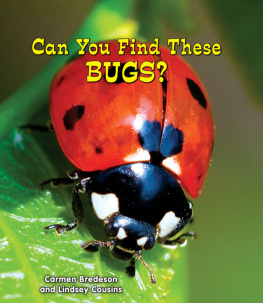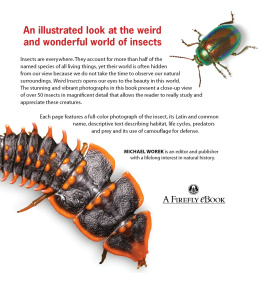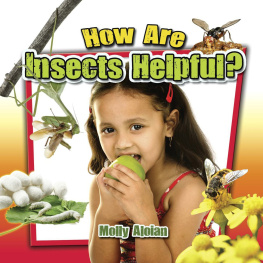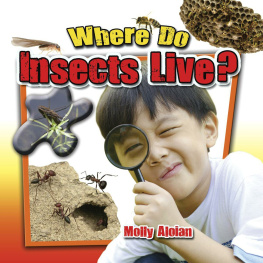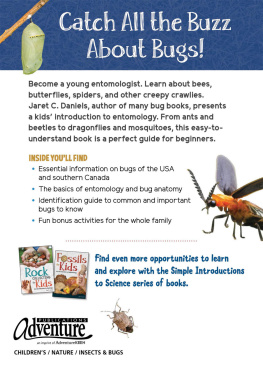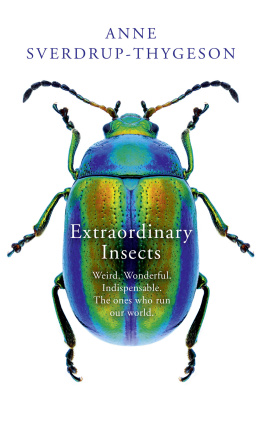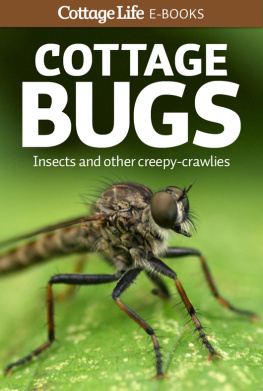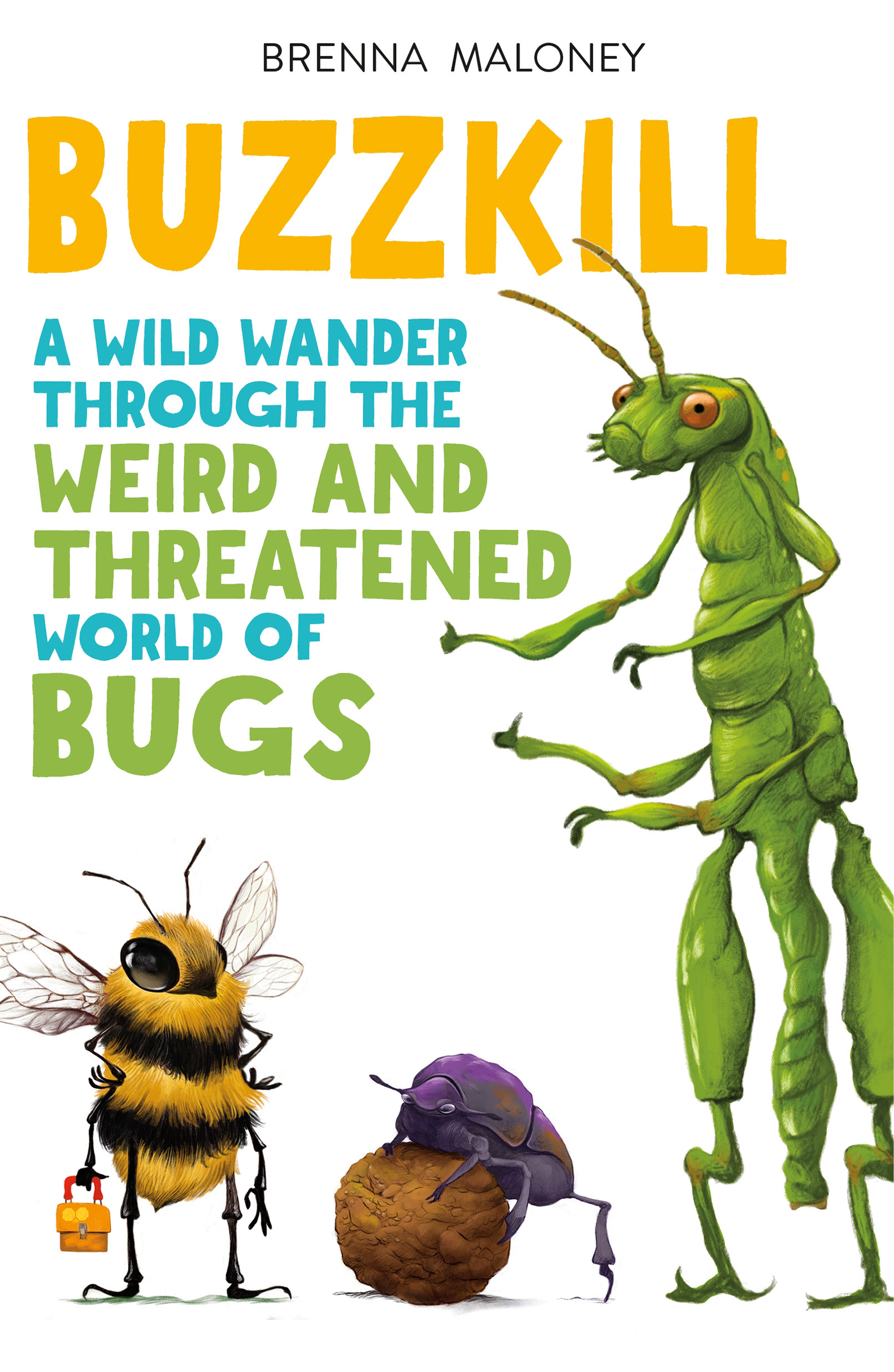Contents
Guide
Pagebreaks of the print version

The author and publisher have provided this e-book to you for your personal use only. You may not make this e-book publicly available in any way. Copyright infringement is against the law. If you believe the copy of this e-book you are reading infringes on the authors copyright, please notify the publisher at: us.macmillanusa.com/piracy.
This book is dedicated to Steve Levingston,
who told me I could,
then told me I should.
But I wouldnt have, Steve.
Not without your support.
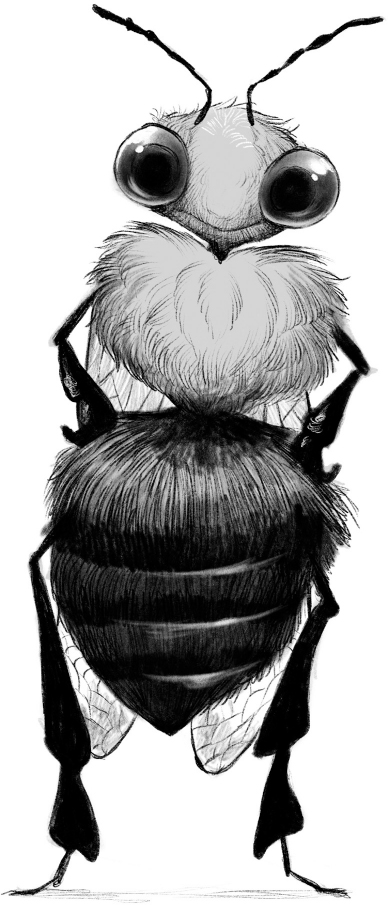
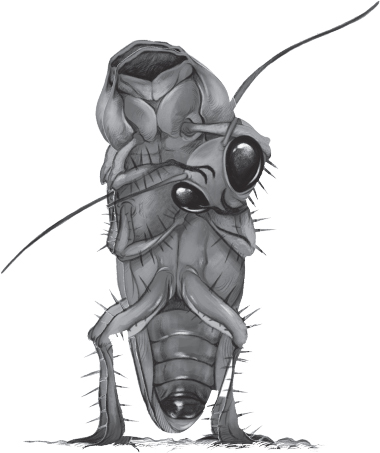
A COCKROACH CAN live without its head for 168 hours. Moths cant fly during an earthquake. The larva of a Goliath beetle can weigh as much as a McDonalds Quarter Pounder.
How much of that did you know?
On any given night, you could have up to 10 million dust mites in your bed. The praying mantis is the only animal on Earth with one ear. Bees can recognize human faces. Aphids are born pregnant.
I could go on all day. Really. The insect world is a fascinating place. You might not think so. You might think insects are gross. Or scary. Or dangerous. They get a bad rap, insects. Surveys tell us that 25% of Americans are afraid of insects. They bite. They sting. They carry disease. They ruin our picnics. They look icky. If I asked you to name three icky bugs right now, Im sure you could do it. You might rattle off spiders, ticks, and centipedes. All super icky, I agree! Except that none of those things are insects.
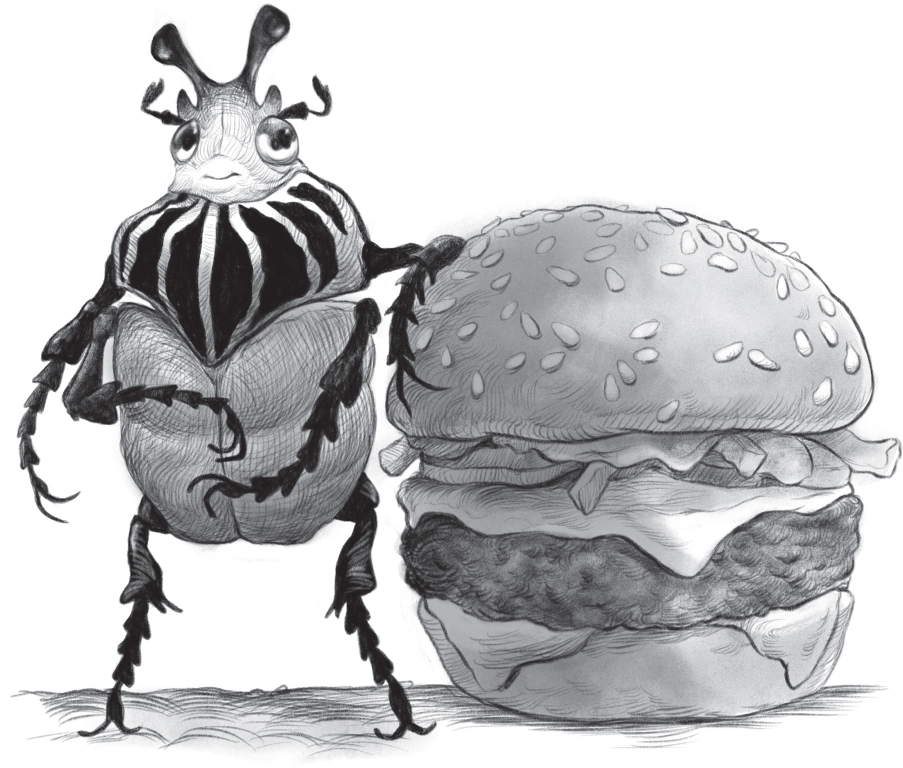
Huh? Yeah, no. None of those things are insects. Spiders and ticks are arachnids. A centipede is a myriapod. So you can go right on thinking those things are icky. Im right there with you. Yuck-o! But insectsinsects are surprisingly cool. They have many admirable, enviable traits. They have superpowers. And they are among the most successful living things on the planet.
Maybe youve never really thought about it before. Thats okay. Youre busy. Were all busy. Its not top of mind; I get that. But Id like to tell you some amazing things about insects, because this stuff is worth knowing. Ill explain why a little later on, but first I want to tell you what an insect is and what it isnt. Once I do that, youll be able to easily pass the spider-tick-centipede test.
Ready? Okay. All adult insects have three body segments: a head, a thorax, and an abdomen. So right from the start, you know a spider isnt an insect. Its only got that tiny little pinhead up front and that big booty in the back. Two parts, not three.

Insects are the only animals in the world that have six legs. Count them upspiders? Eight. Ticks? Eight. Centipedes? Ha ha, thats a trick question. I want you to answer 100 because centi-, in units of measurement, means hundred. In actuality, centipedes have one pair of legs for each body segment. Depending on the species of centipede were talking about, they can have between 15 and 177 pairs of legs. Which is way more than six, anyway. So centipedes are definitely not insects.
What else? Most insects have wingstwo pairs is standard, some ( fl ies) have only one pair. Besides birds and bats, insects are the only animals that can fl y. No wings on our spider, tick, or centipede friends.
Insects usually have two feelers or antennae on their heads that they use for various things, such as smelling, listening, or tasting. Insects are also spineless. Every last one of them. Im not suggesting they lack courageI mean it in the literal sense: Insects dont have spines. Theyre invertebrates. You probably know some other invertebrates like octopuses and jellyfish. But insects arent squishy and shapeless like those guys because they have skeletons on the outside of their bodies called exoskeletons.
So those are the basics. Now you can look at any gross little thing, and without really knowing what it is, you can definitely say whether or not its an insect. Dragon fl y? Three body segments, wings, six legs, antennae. Check! Wood louse? Hmmm Sounds insect-y. But no! Once you take a look at it, you can see its only got one main body segment. The wood louse is actually a
crustacean like a crab or a shrimp. Slug? Cmon! Thats too easy: no legs, no wings, no exoskeleton. Its just got that one blobby body with doodly-doos on its head. Definitely not an insect. See? Once you know the rules, you can get pretty good at this game.
Earlier I told you that insects are some of the most successful animals on the planet, and I want to circle back to that idea and tell you more. How do we measure success? One way is to look at the sheer volume of insects on our planet.
BY THE POUND
You probably learned this in the fourth grade, but it might be lodged deep in your gray matter somewhere between that list of state capitals and that other list of American presidents. No worries. I can remind you. The animal kingdom is made up of six categories: mammals, amphibians, reptiles, birds, fish, and invertebrates. Invertebrates make up the largest chunkmore than 95% of the animal kingdom. Insects make up 71.1% of the invertebrate group.
Close to a million species of insects have been described and named. These are the ones we know about. Scientists have only been able to come up with rough estimates of the total number of insect species on Earth. They put that best guess somewhere between 3 million and 100 million species.
What does that mean in terms of the actual number of insects? Its like a crap-ton. Obviously, crap-ton is not an objective number. I merely say that so you will know there are a lot. Some people have trouble processing big numbers. If its more than, say, five, I have trouble. But for the sake of transparency, I will give you the current estimate: At any time, its estimated that there are some 10 quintillion individual insects milling about.
What even is a quintillion? I had to look it up. Its a 10 with 18 zeros after it. (Like that helps.) Here are a couple of other, more digestible ways to look at it. One out of every four animals on Earth is a type of beetle. For every human on Earth, there may be more than 450 kilograms (1,000 pounds) of termitesabout as much as a full-grown cow. There are 1.4 billion insects per person on this planet. Like I was saying: crap-ton.
BY THE PLACE
You also probably know this already, but insects are everywhere. They live in every biome and every habitat on Earth. You can find them in wetlands, tundra, grasslands, oceans, deserts, tide pools, mountains, forests, prairies, rain forests, caves, swamps, in peoples homes, on peoples bodies, and in Antarctica. Antarctica always gets dissed. Like nothing goes on there or something. Tell that to Belgica antarctica, baby. Its a fl ightless midge. Its pretty hard to see as its no bigger than 6 millimeters (0.24 inches) long. Still, its the largest purely terrestrial animal native to the continent (as well as its only insect). Most animals cant hack it thereits too freaking cold. Temperatures there cause cells to freeze and expand, and they can cause irreparable damage to most living things. Not so the midge! Its capable of dehydrating its tissues to survive in temperatures down to 15 Celsius (5 Fahrenheit).



